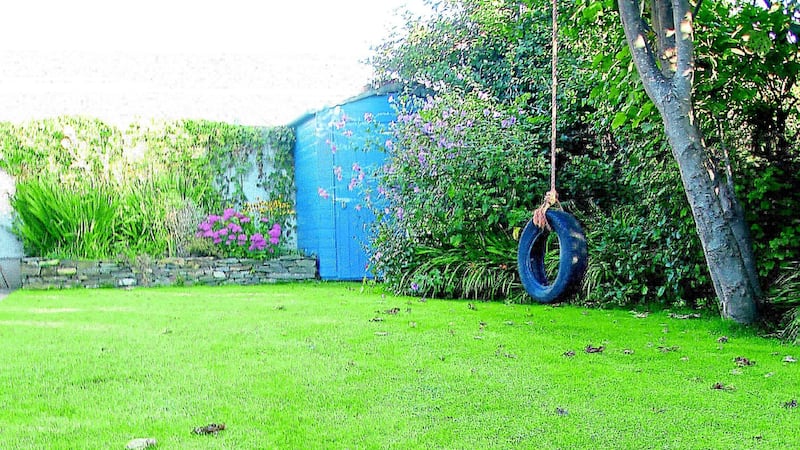When it comes to having a lawn that's the envy of your neighbours then there's no substitute for hard graft.
John Manley presents a timely autumn lawn care schedule
Nothing in the garden better represents people's desire to conform than a lawn. When a newly built home is acquired it's normally the first -- and too often the last -- bit of landscaping householders undertake. Flatten the garden, sow some grass seed (or lay turf), leave it to grow then return to it every now and then with a mower. it's something we tend to do without thinking; an easy, low maintenance option that doesn't require too much imagination. i did it and as you read this it's likely there's somebody not too far away embarking on the very same project.
Pity the fools, as only the naive and the deluded would believe a lawn to be low maintenance. in fact, it's difficult to think of anything more high maintenance. Consider the case against - there's the mowing, the grass cuttings disposal, the fuel costs and attendant carbon emissions. then there's the control of moss and leather jackets, the fertilisers and weedkillers, the kits for mending bare patches and yellow patches, the puddles, the hard, dried, cracked soil versus the soggy, waterlogged surface.
When the realisation that lawns are far from the easy dawns on people they take one of three courses of action. the first is to replace it with something they think demands even less maintenance -- a minimalist gravel garden, tarmac or even synthetic grass. the second group -- let's call them the enlightened -- see the folly of their ways and decide all the energy dedicated to lawn upkeep could be better deployed. they feel the ground occupied by square yards of monocultural grass could be more productive and more aesthetically pleasing. here, the bland expanse of single shade grass is turned into beds, borders, a potager, a wildflower garden -- or ideally all of these combined. the third group -- and the one that's in the majority -- are that largely male, middle-aged demographic who have simply become stuck in their ways and can't entertain the thought of losing their lawn. therefore they maintain the status quo. But what this group needs to realise is that no amount of chemicals and commercial treatments will substitute hard graft. And as we move into autumn we enter one of the key periods for lawn care activity. this twice-a-year exercise will initially leave your lawn looking slightly worse for wear but in a matter of weeks the benefits of the autumn pamper will hopefully become apparent. Kick-off by cutting your grass on a high blade setting. this not only collects and shreds any leaves that have fallen on the grass but reduces the amount of debris you'll have to pick up afterwards.
Follow the mowing with scarifying, an process that involves repeated short scrapes of the grass with a spring-tined rake.
Scarifying is an energy-intensive exercise that removes the mat of grass clippings and other debris woven between the blades of grass - collectively known as thatch. the build-up of thatch suffocates the soil beneath, preventing moisture and sunlight getting through and therefore inhibiting new growth. it's physically demanding, but the scarifying must be thorough, ruthless even, leaving the grass looking like a old, threadbare carpet.
After that work-out you may wish to take a day off from the garden before you tackle spiking -- the next exhausting stage of the autumn lawn care regime.
Spiking is carried out with a fork and its aim to reduce compaction and aerate the soil beneath the lawn, giving the grass roots room to grow. Plunge the fork in to a depth of around six inches and wiggle it, then continue to do this at six inch-to-one foot intervals. if you have serious compaction problems use a hollow tiner to remove plugs of earth. the numerous perforations created during spiking and hollow tining will also make it easier for the soil to absorb essential moisture. next add a top dressing of sharp sand (up to 80 per cent) and soil, spreading it in evenly with a yard brush. this is also a good time to add some fresh seed to fill out those bare patches. Complete the process by applying an autumn feed, which has more potassium and less nitrogen than the summer feed.


